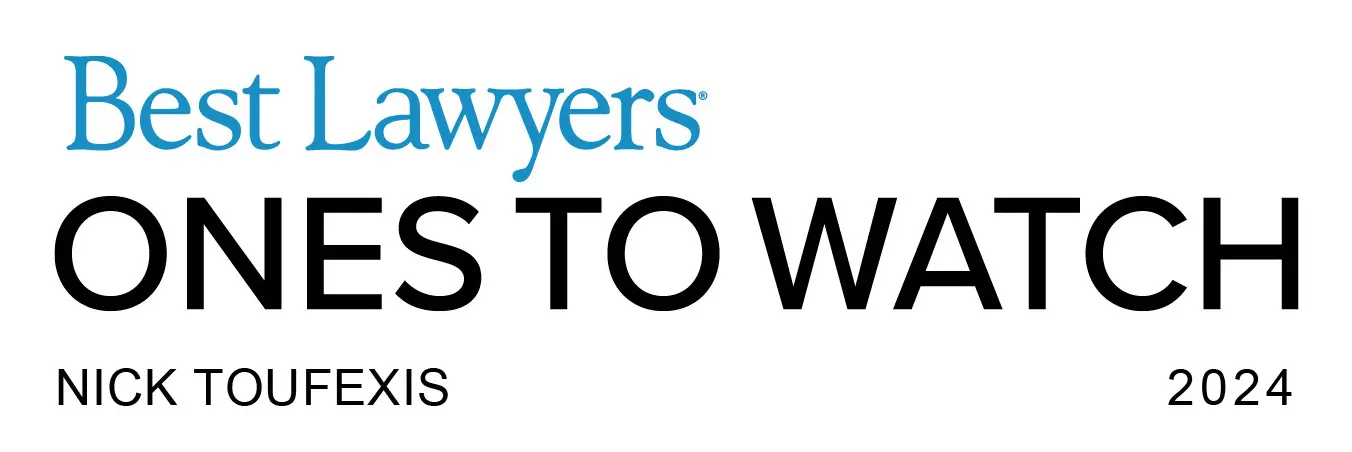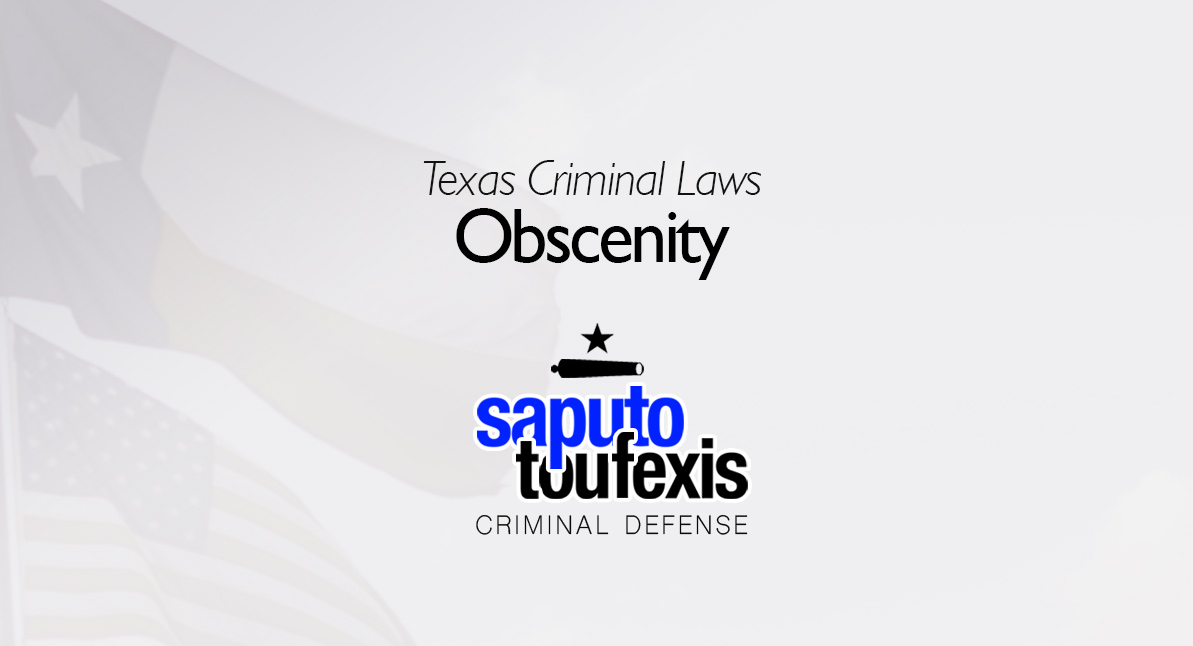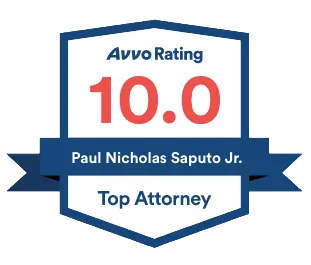The Texas Obscenity law makes it illegal to promote, or possess with the intent to promote, any obscene material or obscene device.
FAQs about the
Obscenity law in Texas
- What is the current Texas law about Obscenity?
- What does “Obscene” mean and how is “Obscene” defined?
- What is the definition of “Obscene Material” and what does “Obscene Material” mean?
- What is the definition of “Obscene Device” and what does “Obscene Device” mean?
- What does it mean to “Promote” or “Wholesale Promote“?
- What is the statute of limitation for Obscenity in Texas?
- What is the penalty for a Texas Obscenity offense?
- Can you get probation for Obscenity in Texas?
- Do I have to register as a sex offender in Texas if guilty of Obscenity?
- What level of crime is Obscenity in Texas?
The Obscenity statute also makes it illegal to produce, present, or direct an “obscene” performance or participate in a portion of a performance that is “obscene” or that contributes to its “obscenity.”
Have you been charged with Obscenity? Book a consultation to discuss legal representation with attorneys Paul Saputo and Nicholas Toufexis today.
If the state has charged you with a violation of the Obscenity offense, you should be aware that this is a serious criminal offense. Accordingly, you should hire a criminal defense attorney to defend you against the charge. The definitions of “obscene,” “obscene material” and “obscene device” are critical in defending you against this charge because these terms are parts of the offense that determine whether a crime has been committed or whether you were exercising your rights to free speech. The state cannot violate the First Amendment right to freedom of speech guaranteed by the United States Constitution.
The Texas legislature codified this criminal offense in Texas Penal Code Section 43.23. The legislature did not update this law in 2023. In fact, this law has not been amended since 2013.
The Penal Code classifies the Texas Obscenity law under Title 9 “Offenses Against Public Order and Decency,” Chapter 43 “Public Indecency.” These “public indecency” crimes are sex crimes, but they are not of a violent or assaultive nature. Learn more about the Texas offense of Obscenity below.
What is the current Texas law about Obscenity?
Texas law currently defines the offense of Obscenity in Penal Code Section §43.23 as follows:[1]
(a) A person commits an offense if, knowing its content and character, he wholesale promotes or possesses with intent to wholesale promote any obscene material or obscene device.
(c) A person commits an offense if, knowing its content and character, he:
(1) promotes or possesses with intent to promote any obscene material or obscene device; or
(2) produces, presents, or directs an obscene performance or participates in a portion thereof that is obscene or that contributes to its obscenity.
The Obscenity law defines violations in two different subsections. In subsection (a), as described above, the offense is committed when someone “wholesale promotes” or possesses with intent to wholesale promote any “obscene material” or “obscene device.” However, the promotion or intent to promote must be with the person’s knowledge of the “content and character” of the obscene material or obscene device.
In subsection (c), as described above, the offense is committed when someone “promotes” or possesses with intent to produces, presents, or directs an “obscene” performance or participates in a portion of a performance that is “obscene” or that contributes to its “obscenity.”
There is an affirmative defense available if the possession was pursuant to a ” bona fide medical, psychiatric, judicial, legislative, or law enforcement purpose.”[2]
What does “Obscene” mean and how is “Obscene” defined?
The law provides the following as the defintion of “obscene”:[3]
(1) “Obscene” means material or a performance that:
(A) the average person, applying contemporary community standards, would find that taken as a whole appeals to the prurient interest in sex;
(B) depicts or describes:
(i) patently offensive representations or descriptions of ultimate sexual acts, normal or perverted, actual or simulated, including sexual intercourse, sodomy, and sexual bestiality; or
(ii) patently offensive representations or descriptions of masturbation, excretory functions, sadism, masochism, lewd exhibition of the genitals, the male or female genitals in a state of sexual stimulation or arousal, covered male genitals in a discernibly turgid state or a device designed and marketed as useful primarily for stimulation of the human genital organs; and
(C) taken as a whole, lacks serious literary, artistic, political, and scientific value.
Each section of that definition is important, because in order to obtain a conviction for Obscenity, the state’s attorneys must prove that the material is in fact “obscene.” Without proof that the material is obscene, then the offense of Obscenity has not been committed. The definition is narrow by law because of the constitutional dangers inherent in the state’s attempts to limit speech by deeming it obscene.
What is the definition of “Obscene Material” and what does “Obscene Material” mean?
“Obscene material” is not defined on its own in the statute, but the words “obscene” and “material” are each defined separately. The definition of “obscene” is discussed above.
“Material” is defined as “anything tangible that is capable of being used or adapted to arouse interest, whether through the medium of reading, observation, sound, or in any other manner, but does not include an actual three dimensional obscene device.”[4] Therefore, “material” under this definition would include things like books, videos, photographs and the like. But it would not include “obscene devices” like sex toys.
What is the definition of “Obscene Device” and what does “Obscene Device” mean?
The law defines “Obscene Device” as follows:[5]
(7) “Obscene device” means a device including a dildo or artificial vagina, designed or marketed as useful primarily for the stimulation of human genital organs.
Accordingly, “obscene devices” are basically sex toys.
What does it mean to “Promote” or “Wholesale Promote“?
The law defines “Promote” and “Wholesale Promote” as follows.[6]
(5) “Promote” means to manufacture, issue, sell, give, provide, lend, mail, deliver, transfer, transmit, publish, distribute, circulate, disseminate, present, exhibit, or advertise, or to offer or agree to do the same.
(6) “Wholesale promote” means to manufacture, issue, sell, provide, mail, deliver, transfer, transmit, publish, distribute, circulate, disseminate, or to offer or agree to do the same for purpose of resale.
Therefore, promoting is basically done at the retail level (shop owners) whereas wholesale promoting is done at the wholesale level (manufacturers and others who market goods to retail store owners).
What is the statute of limitation for Obscenity in Texas?
Misdemeanor level Obscenity charges have a two-year limitations period.[7] Felony level offenses have a three-year limitations period.[8]
What is the penalty for a Texas Obscenity offense?
An Obscenity conviction is a Class A Misdemeanor if the offense was simple promotion or production under subsection (c).[9] An Obscenity conviction is a state jail felony if the offense was wholesale promotion under subsection (a).[10] The penalty for a conviction under either subsection (a) or (c) can be enhanced to a second degree felony if the subject of the material was:
(1) a child younger than 18 years of age at the time the image of the child was made;
(2) an image that to a reasonable person would be virtually indistinguishable from the image of a child younger than 18 years of age; or
(3) an image created, adapted, or modified to be the image of an identifiable child.
Can you get probation for Obscenity in Texas?
The Texas Code of Criminal Procedure allows both judges and juries to grant probation for Obscenity, and judges are also allowed to accept deferred adjudication plea deals.[11]
Note, however, that no matter the offense, neither judges nor juries may recommend community supervision for any suspended sentence of over 10 years.[12] Also, judges may not grant community supervision after a conviction if (1) the defendant used or exhibited a deadly weapon during the commission of the felony or immediate flight thereafter and (2) the defendant used or exhibited the deadly weapon himself or was a party to the offense and knew that a deadly weapon would be used or exhibited.[13]
Do I have to register as a sex offender in Texas if guilty of Obscenity?
The Obscenity offense does not appear on the list of offenses requiring registration under Chapter 62 of the Texas Code of Criminal Procedure.[14]
However, the legislature can add this offense to the list at any time. If that happens, people convicted of Obscenity would have to register, even if the offense did not appear on the list at the time they accepted a deferred adjudication plea (even if later dismissed), pled guilty or were founty guilty.
What level of crime is Obscenity in Texas?
The Penal Code classifies Obscenity as either a Class A misdemeanor or a second degree felony, depending on the circumstances.
Learn more about the penalty range for this offense in the section above.
Legal References:
^1. Texas Penal Code §43.23. This law is current as of 2024.^2. Texas Penal Code §43.23(g)^3. Texas Penal Code Section §43.21(a)(1)^4. Texas Penal Code Section §43.21(a)(2)^5. Texas Penal Code Section §43.21(a)(7)^6. Texas Penal Code Section §43.21(a)(5)&(6)^7. Code of Criminal Procedure 12.02(a)^8. See Code of Criminal Procedure 12.01(9)^9. Texas Penal Code §43.23(b)^10. Texas Penal Code §43.23(d)^11. See Chapter 42, Texas Code of Criminal Procedure, Art. 42A.054, Art. 42A.056, Art. 42A.102 .^12 Art. 42A.053(c), Texas Code of Criminal Procedure^13. Art. 42A.054(b), Texas Code of Criminal Procedure^14. Code of Criminal Procedure, Article 62.001






